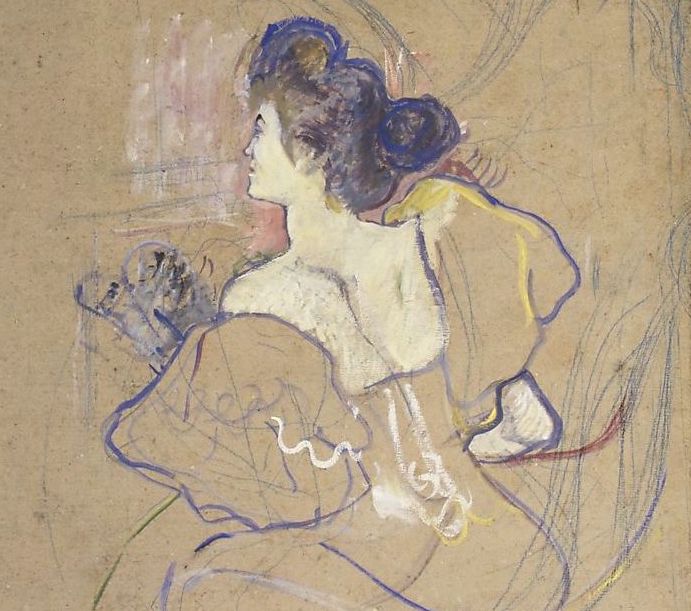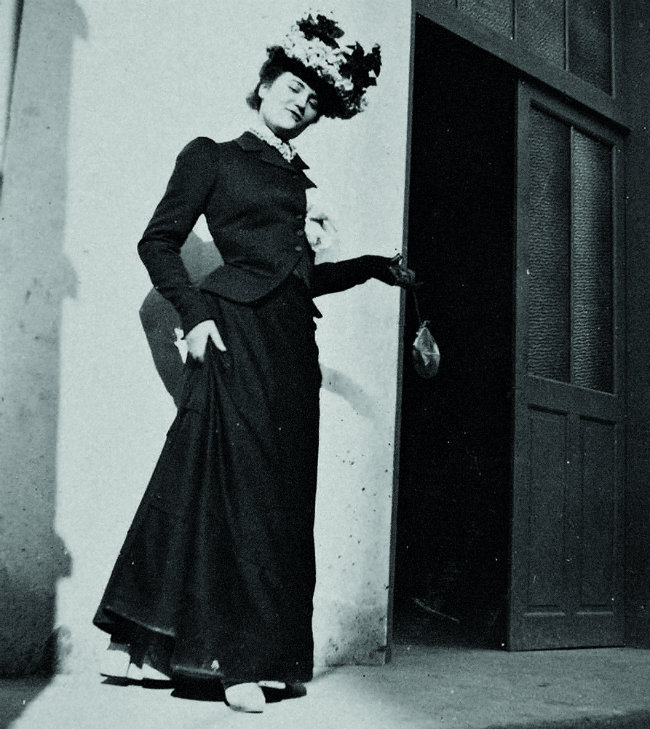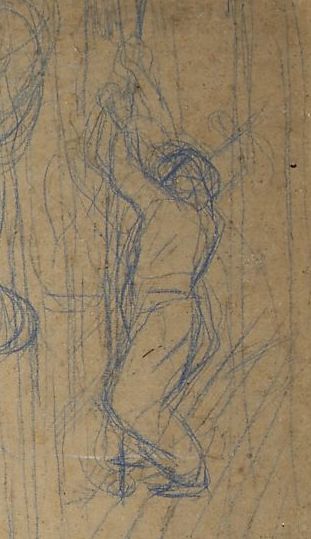Vincent van Gogh in 10 Paintings: A Journey Through His Art
Vincent van Gogh remains one of the most influential figures in the history of Western art. His life, marked by intense emotions, personal struggles,...
Jimena Aullet 3 October 2024
27 March 2023 min Read
Henri Toulouse-Lautrec is famous for his portrayals of Parisian nightlife: cabarets, theaters, and brothels. He showed us a world of decadence and escape from urban malaise where his friends, muses, and patrons collided. He portrayed one of the most famous personalities of his time, Misia Natanson, in a theater.
In this sketch, he depicts Misia Natanson and an anonymous stagehand on a second plane. So we have a woman from the elite, a patroness of the artists, and a theater worker, who is manually pulling down the curtain.
Madame Thadée Natanson at the Theater, made in 1895, was drawn for the cover of the final issue of L’Estampe Originale (1893–1895), a quarterly album of original prints. Artists like Camille Pissarro, Paul Gauguin, Pierre Bonnard, Pierre-Auguste Renoir, Paul Signac, James Whistler were also published on its pages.

The lady in the theater box is the glamorous patroness Maria Zofia Olga Zenajda Godebska, known as Misia. Her dress is provocative with a very low-cut back, revealing her slim, elongated neck. We only see her profile, as she is looking at the stage or the audience. She is alone, seductive, statuesque, and mysterious.

Marcel Proust used Natanson as the prototype for the characters of Princess Yourbeletieff and Madame Verdurin in his novel In Search of Lost Time. She was “la reine de Paris” at the turn of the 20th century, painted by Toulouse-Lautrec, Renoir, Édouard Vuillard, Felix Vallotton, adored by writers who also were indebted to her like Paul Verlaine and Stéphane Mallarmé.
As it is a study for the cover design, it is not finished, only her torso and head look fully completed. The blue that outlines her silhouette and the curves of her body is unusual, softer than black. She doesn’t wear any jewelry, the only accessory is a fan in her left hand that gives her a more delicate and sensual look.
In the second plane there is a technician bringing down the curtain. Toulouse-Lautrec draws his figure next to a rope, pulling on the chains of stage machinery.

This sketch is a rare instance of an artwork depicting the stagehands’ life, symbolizing those who use their technical skills and talent to pull the show together. The roadies, the production technicians, are the silent heroes of each concert or theater piece. Without them, the magic does not happen. Nowadays the stage is automatic, but it still requires riggers, carpenters, light and sound technicians to make a spectacle, an illusion of a world before our eyes.
The drawing was restored a few years ago, as it was once cut into two pieces and framed so as to reveal only Natanson in her loge. However, when the two fragments of the work are joined, the depicted scene is more interesting. It juxtaposes the worlds on stage, in the box, and backstage, making Toulouse-Lautrec’s vision more complex and full-bodied.
DailyArt Magazine needs your support. Every contribution, however big or small, is very valuable for our future. Thanks to it, we will be able to sustain and grow the Magazine. Thank you for your help!